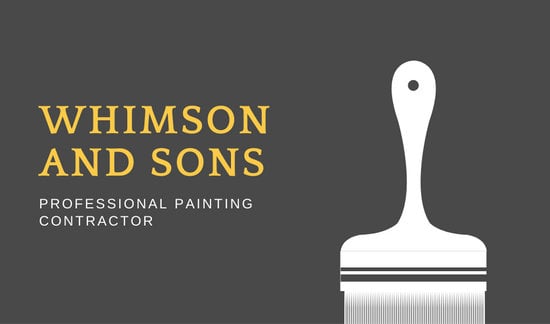Essential Seasonal Aspects Of Commercial Outside Painting: What You Ought To Comprehend
Essential Seasonal Aspects Of Commercial Outside Painting: What You Ought To Comprehend
Blog Article
Post Produced By-Fox Whalen
When you're intending an industrial outside paint task, seasonal variables can make or damage your outcomes. You'll wish to take into consideration exactly how temperature level and humidity effect paint application and drying times. Choosing the best period can ensure your paint adheres properly and lasts much longer. But which seasons are truly the most effective for this sort of job? Allow's explore the crucial elements that can affect your project's success.
The Effect of Temperature on Paint Application
When you're planning an industrial exterior paint job, the temperature can substantially impact exactly how well the paint sticks and dries.
Ideally, you intend to repaint when temperatures range in between 50 ° F and 85 ° F. If it's too cold, the paint might not treat effectively, leading to problems like peeling or fracturing.
On the other side, if it's too hot, the paint can dry out also swiftly, avoiding appropriate bond and resulting in an uneven finish.
straitline painting need to likewise think about the time of day; morning or late afternoon supplies cooler temperatures, which can be a lot more favorable.
Constantly inspect the supplier's suggestions for the specific paint you're utilizing, as they frequently offer advice on the perfect temperature range for optimum results.
Moisture and Its Effect on Drying Times
Temperature level isn't the only environmental element that affects your commercial exterior painting task; humidity plays a substantial role too. High moisture degrees can reduce drying out times significantly, affecting the overall quality of your paint job.
When the air is saturated with dampness, the paint takes longer to treat, which can lead to problems like bad attachment and a higher threat of mold development. If you're repainting on a specifically moist day, be prepared for prolonged wait times in between coats.
Highly recommended Webpage to keep an eye on local weather and strategy appropriately. Preferably, aim for humidity degrees between 40% and 70% for optimum drying out.
Maintaining these factors in mind ensures your project remains on track and supplies a long lasting surface.
Best Seasons for Commercial Outside Paint Projects
What's the best time of year for your commercial exterior paint projects?
Spring and very early autumn are usually your best bets. During these periods, temperature levels are mild, and humidity levels are usually lower, creating perfect conditions for paint application and drying.
Prevent summertime's intense heat, which can trigger paint to dry too quickly, causing inadequate attachment and surface. In a similar way, winter's chilly temperature levels can prevent appropriate drying out and healing, risking the long life of your paint task.
Aim for days with temperatures in between 50 ° F and 85 ° F for optimal results. Remember to inspect the local weather forecast for rainfall, as wet problems can spoil your task.
Planning around these aspects ensures your paint job runs efficiently and lasts much longer.
Verdict
Finally, intending your business outside paint projects around seasonal considerations can make a considerable distinction in the result. By scheduling work throughout the suitable temperature levels and humidity degrees, you'll ensure better attachment and drying out times. Keep in Recommended Internet site to keep an eye on neighborhood weather forecasts and pick the right time of year-- springtime and early fall are your best choices. Taking these actions will certainly aid you achieve a sturdy and professional coating that lasts.
